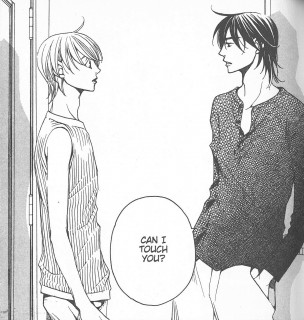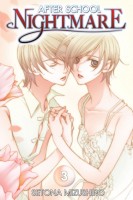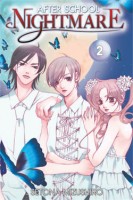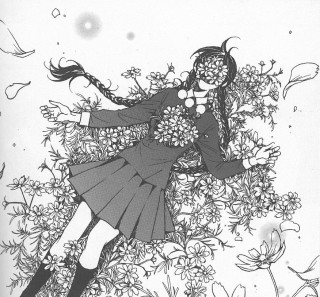 Creator: Setona Mizushiro
Creator: Setona Mizushiro
U.S. publisher: Go! Comi
ISBN: 9781933617473
Released: October 2007
Original release: 2006
After School Nightmare by Setona Mizushiro is a manga series that I honestly find disconcerting, so much so that even though I also find it compelling, I could never bring myself to read past the first few volumes until recently. The manga is a dark and intense psychological drama dealing with issues of abuse, gender, and personal identity. Despite being a series that is quite obviously fantasy-horror, some of the themes actually hit fairly close to home for me. Mizushiro has skillfully crafted a chilling setting and ominous atmosphere for After School Nightmare in which to explore both nightmares and reality. The ten-volume series was published in English by the now defunct Go! Comi and so is sadly out-of-print, but it seems to still be fairly easy to find. After School Nightmare, Volume 5 was first published in Japan in 2006 while the English translation was released in 2007. The series reaches its halfway point with this volume, but the intensity of the drama and psychological horror shows no sign of letting up anytime soon.
After having let his feelings be pulled one way and then another, Mashiro has made his decision: In order to live as a man he has rejected Sou and his aggressive advances in favor of his girlfriend Kureha. Mashiro tells himself that it’s because Kureha is the one who needs him the most, never considering that Sou might need him, too. Ultimately though, Mashiro’s decision is a selfish one and not nearly as gallant as he would like to believe or portray. Although he has been living as a boy for most of his life, he is still incredibly insecure in his gender identity, mostly due to the fact that his body has both male and female characteristics. By dating Kureha and by becoming her self-proclaimed guardian and protector, Mashiro hopes to unequivocally establish his masculinity for himself and for others, something he doesn’t believe would be possible if he recognized having feelings for another guy. But even though Mashiro has made his decision, he still has lingering doubts.
 Many of the characters in After School Nightmare are broken, damaged, or incomplete individuals who are attempting to put the pieces of their lives together to form, or reform, some sort of whole. That is part of the purpose of the titular after school nightmare—a special class that, through shared dreams, forces them to confront their greatest fears and in the process reveal them to the other students as they all try to determine who they really are as people. It can actually be quite painful and heart-wrenching to witness the events unfold both within the nightmares and outside of them; truly terrible and horrifying things occur that strongly influence the characters’ physical, mental, and emotional well-being. At this point in the series Mashiro’s personal struggles and torments are the ones about which the most is known, but After School Nightmare, Volume 5 begins to reveal more about Sou’s tragedies which previously had largely only been hinted at.
Many of the characters in After School Nightmare are broken, damaged, or incomplete individuals who are attempting to put the pieces of their lives together to form, or reform, some sort of whole. That is part of the purpose of the titular after school nightmare—a special class that, through shared dreams, forces them to confront their greatest fears and in the process reveal them to the other students as they all try to determine who they really are as people. It can actually be quite painful and heart-wrenching to witness the events unfold both within the nightmares and outside of them; truly terrible and horrifying things occur that strongly influence the characters’ physical, mental, and emotional well-being. At this point in the series Mashiro’s personal struggles and torments are the ones about which the most is known, but After School Nightmare, Volume 5 begins to reveal more about Sou’s tragedies which previously had largely only been hinted at.
From the beginning of After School Nightmare, Sou has been shown to be one of the strongest and most assertive characters in the series which is why seeing him in such a vulnerable state in the fifth volume is especially distressing. Sou is an unlikeable person in many ways—among other things showing a shocking lack of respect for Mashiro, the person he supposedly loves—but I can’t help but feel some empathy for him as he is caught up in multiple extremely unhealthy and manipulative relationships. And he’s not always the one doing the manipulating; his relationship with his sister and the control she seem to have over him is particularly troubling. Mashiro’s rejection hits Sou hard, too, certainly much harder than either of them really expected. At first Sou reacts in anger, but ultimately he tries to lives in forced denial of his feelings. Considering how the rest of After School Nightmare has progressed so far, I don’t anticipate that this method of coping will turn out well for any of the people involved.







